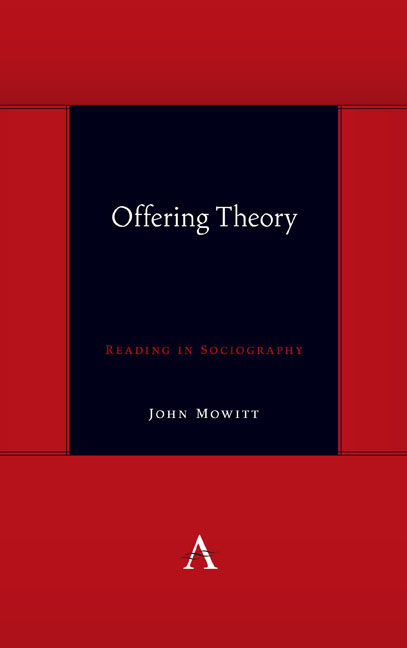Book contents
- Frontmatter
- Dedication
- Contents
- Acknowledgments
- The Pretext
- Introduction: Theory in Limbo
- 1 Queer Resistance: Foucault and the Unnamable
- 2 Stumbling on Analysis: Psychoanalysis and Everyday Life
- 3 Strangers in Analysis: Nationalism and the Talking Cure
- 4 “Jamming”
- 5 WWJD?
- 6 What Said Said
- 7 Apart from Theory
- 8 Conclusion: Theory Is Out There
- References
- Index
- Frontmatter
- Dedication
- Contents
- Acknowledgments
- The Pretext
- Introduction: Theory in Limbo
- 1 Queer Resistance: Foucault and the Unnamable
- 2 Stumbling on Analysis: Psychoanalysis and Everyday Life
- 3 Strangers in Analysis: Nationalism and the Talking Cure
- 4 “Jamming”
- 5 WWJD?
- 6 What Said Said
- 7 Apart from Theory
- 8 Conclusion: Theory Is Out There
- References
- Index
Summary
So perhaps Theory takes place when and where we least expect it. For example, in a musical performance. If so, what then are the challenges of reading it? Slavoj Žižek and his collaborators in the “remake” of Allen's Everything You Always Wanted to Know About Sex* (itself “based” on David Reuben's best seller), more precisely in their staging of a reading of Lacan through the films of Alfred Hitchcock, have taken bold steps down this path, a path that has since culminated in Alain Badiou's proposition, “cinema basically consists in creating new ideas about what an idea is” (Badiou 2010, 202). This chapter will pursue this gambit, not by refining what it might mean to argue that the cinema thinks theoretically about ideas but by tracing how a piece of music, specifically Bob Marley's recording of “Jamming,” can be shown to offer a theory of improvisation. As this formulation suggests, offering (whether Theory and anything else) involves jamming, not, as my reading will argue, just making it up but by seizing up and releasing, that is, enunciating the rhythm of thought.
As many readers will know, the fortunes of “the object” are changing. Long neglected or disparaged (perhaps nowhere more vociferously than in a humanities devoted to subjectivity), the object, especially in the hands of those committed to what is marketed as “object oriented ontology,” has now formally filed for recognition. In what follows I will be entertaining a certain strand of this trend, notably that moment within it when the ontology of the object is understood to withdraw from human attention. My orientation, however, will be different, and this for at least two reasons. First, as intimated above, the object at issue here is a recorded song and, as a rather obvious instance of “expression” (what Marx following Hegel called “externalization”), it might on those grounds be excluded as an object worthy of ontologically oriented attention. And second, while I will agree that this object exists, as it were, on its own terms, I will turn toward it to listen, not so much to what it refuses to say but to what its taciturnity offers as a form of theoretical pedagogy.
- Type
- Chapter
- Information
- Offering TheoryReading in Sociography, pp. 85 - 102Publisher: Anthem PressPrint publication year: 2020



